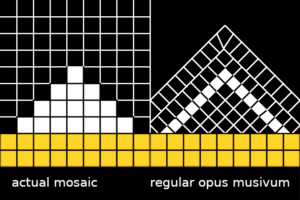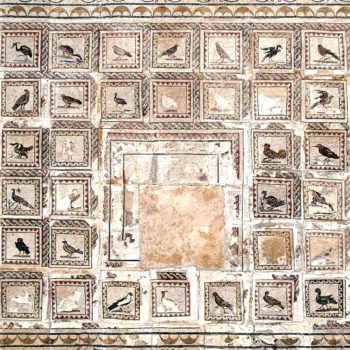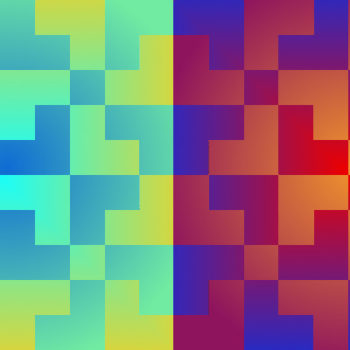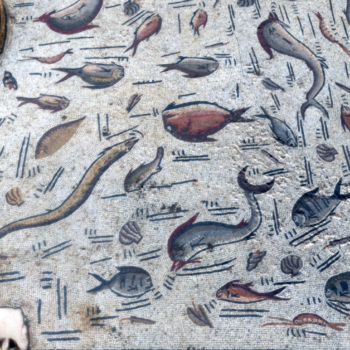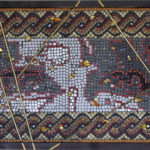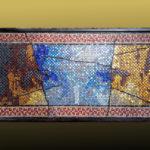The black swimmer mosaic (mosaique au nageur noir) was discovered in August 1991, at the intersection of rue Général-Perrier with rue Auguste in Nimes, France.
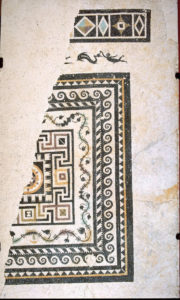
Musée archéologique de Nîmes
A black swimmer and dolphin
the main figurative part of this mosaic are the black silhouettes of a swimmer pinching the tail of a dolphin, possibly being pulled by it.
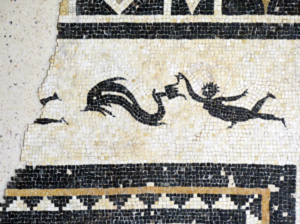
I recreated parts of the mosaic
We have other examples of fishermen, swimmers and dolphins represented together on Roman mosaics, such as in the house of Menander in Pompeii
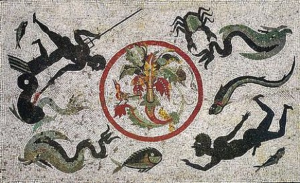
Here are the silhouettes :
And went to work with the triangles border
The triangles border
The architecture of the triangles is quite interesting. In fact it does not follow the regular andamento of opus musivum that requires the lines of tesserae to follow the contours. (1)
This architecture is in fact quite easy to follow as all tesserae are lined up on a square grid.
The actual border is built from 2 elements :
- Straight segment
- Corner


By translation (copy > paste) and rotation (2) you can combine those elements to produce frames of various sizes. (3)
Here we have a square frame using 3 segments on each side :
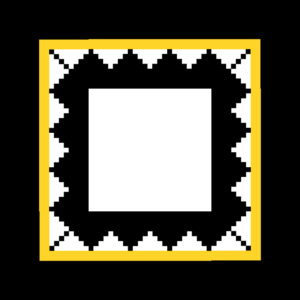
On the actual mosaic, the triangles border frames a number of other square frames using different patterns of waves, swastika, vines, and stylized fortifications. For this article I used this border to frame the silhouettes of the swimmer and dolphin.
Practically it is a rectangle of 10 x 5 segments.

Feel free to use the designs on this page for your own creations. 😀
NOTES
- Note 1 : you can read an excellent article about andamento by Helen Miles
- Note 2 : in GIMP, you can rotate a selected element by following the script : (Copy >Paste >Layer >Transform >Rotate 90o clockwise) .
- Note 3 : to perfectly combine segments and elements in GIMP, it is important to properly configure the grid of your image (image > configure grid) and adjust your grid dimension (Spacing) to a multiple of the width of your tesserae (in pixels)


